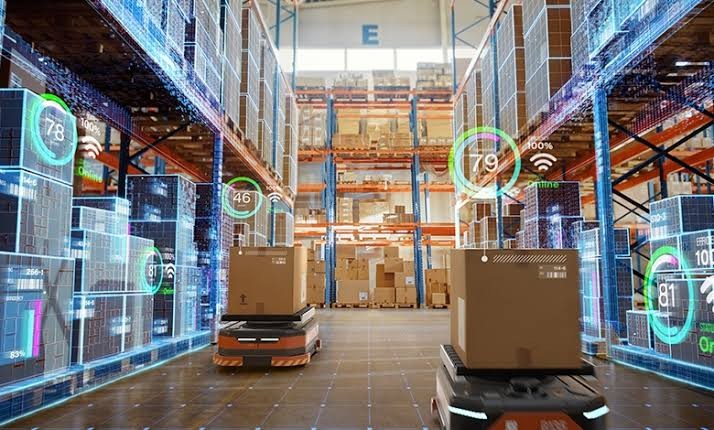A New Era in Logistics
In today’s fast-moving, tech-driven world, the traditional warehouse is getting a serious upgrade. As global supply chains become more complex, companies are turning to smart warehouses to improve efficiency, reduce errors, and stay competitive.
Smart warehouses use advanced technologies—like automation, robotics, artificial intelligence (AI), and real-time data analytics—to manage operations with minimal human input. This evolution is transforming how products are stored, picked, packed, and shipped across industries.
What Is a Smart Warehouse?
A smart warehouse is a digitally connected facility that uses integrated systems and smart technology to streamline all aspects of warehouse management.
This includes:
- Automated guided vehicles (AGVs) and robotics for picking and moving goods
- Warehouse Management Systems (WMS) that track inventory in real time
- AI-powered demand forecasting
- Internet of Things (IoT) devices to monitor temperature, location, and stock levels
- RFID tags and barcodes for fast, accurate scanning
The goal is simple: do more, faster—with fewer errors.
Why Smart Warehouses Are on the Rise
1. E-Commerce Growth
The explosion of online shopping means more products, faster shipping expectations, and smaller delivery windows. Smart warehouses help e-commerce companies handle high volumes with speed and accuracy.
2. Labor Shortages
Warehouse labor is hard to find—and even harder to keep. Automation helps fill the gap by reducing dependence on manual labor for repetitive tasks like picking, packing, and sorting.
3. Real-Time Visibility
Today’s supply chains need real-time data to make fast, informed decisions. Smart warehouses give managers live insights into inventory, shipping status, and demand trends, improving agility and accuracy.
4. Cost Reduction
While the upfront investment in smart technology can be high, the long-term savings are significant. Lower labor costs, fewer shipping errors, and optimized storage all contribute to better bottom-line performance.
Key Technologies Powering Smart Warehouses
Robotics & Automation
Robots and conveyor systems reduce the need for manual labor and speed up movement within the warehouse.
Real-Time Tracking
Using RFID tags, sensors, and barcode scanners, smart warehouses track every item from arrival to shipment.
AI & Machine Learning
AI helps predict demand, optimize inventory placement, and improve order accuracy through continuous learning and analysis.
IoT Integration
IoT devices monitor environmental conditions (like humidity and temperature) and communicate data instantly across systems.
Warehouse Management Systems (WMS)
A WMS coordinates all warehouse activities, from receiving to shipping, and integrates with other parts of the supply chain.
Benefits of Smart Warehousing
- Faster Order Fulfillment – Automated picking reduces processing time.
- Improved Accuracy – Less human error means fewer returns and happier customers.
- Lower Operational Costs – Efficiency leads to long-term savings.
- Scalability – Easily adapt to seasonal spikes or business growth.
- Better Inventory Control – Know exactly what’s in stock and where it’s located.
Challenges to Consider
While smart warehouses bring major advantages, they also come with challenges:
- High initial investment
- Integration with legacy systems
- Cybersecurity risks
- Training staff to use new technologies
Still, many companies find that the benefits far outweigh the costs, especially as technology becomes more accessible and affordable.
Real-World Example: Amazon
One of the biggest adopters of smart warehouse tech is Amazon. The company uses thousands of robots in its fulfillment centers, combined with AI and machine learning, to handle millions of orders daily.
By automating much of its warehousing process, Amazon sets the gold standard for what smart logistics can achieve—and many companies are following suit.
The Future of Supply Chain Warehousing
Smart warehouses are not just a trend—they’re the future of supply chain warehousing. As customer expectations grow and the global marketplace becomes more competitive, businesses need more than traditional solutions.
Investing in smart warehouse technology now means being better prepared for:
- Market disruptions
- Changing consumer behavior
- Global supply chain challenges
- Sustainability goals
Final Thoughts
The rise of smart warehouses is reshaping how businesses approach logistics and fulfillment. Whether you’re a small e-commerce brand or a large distributor, embracing smart technology in your warehouse isn’t just about keeping up—it’s about getting ahead.
If your supply chain relies on speed, accuracy, and flexibility (and whose doesn’t?), it might be time to explore how a smart warehouse can transform your operations.

















